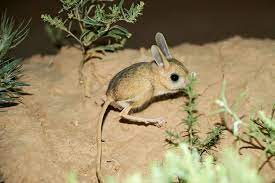In the realm of captivating carnivores, the Ferret emerges as a unique and intriguing creature. Join us on a journey as we explore 46 intriguing facts that shed light on the behaviors, adaptations, and domestication history of this enigmatic mustelid, uncovering its role as a charming companion and its significance in various cultures across the globe.
1. Carnivorous Marvel: The Ferret, a member of the weasel family, boasts sharp hunting instincts.
2. Distinctive Features: Long, sleek bodies, short legs, and a masked face characterize these agile animals.
3. Playful Personalities: Ferrets are known for their curious and playful nature, making them popular pets.
4. Domestication History: Ferrets have been domesticated for over 2,000 years, initially for pest control.
5. Efficient Hunters: Their keen senses, sharp teeth, and agility make them effective hunters.
6. Carnivorous Diet: Ferrets require a high-protein diet, mimicking their wild feeding habits.
7. Carnassial Teeth: Specialized teeth enable Ferrets to slice through flesh with precision.
8. Sleepyheads: Ferrets are crepuscular, sleeping for up to 18 hours a day.
9. Scent Markings: They use scent glands to mark territory and communicate with each other.
10. Burrowing Instincts: Ferrets have a natural inclination to dig and create burrows.
11. Communal Living: In the wild, Ferrets often live in groups called “businesses.”
12. Unique Vocalizations: From “dooking” to hissing, Ferrets have a range of vocal expressions.
13. Territorial Behavior: They are known to defend their territory fiercely.
14. Domestication Adaptations: Domestic Ferrets come in a variety of coat colors and patterns.
15. Misconceptions about Ferrets: Contrary to popular belief, Ferrets are not rodents but rather carnivores.
16. Playtime Needs: Regular play and mental stimulation are essential for the well-being of pet Ferrets.
17. Strong Bonding: Ferrets often form strong connections with their human caregivers.
18. Unique Anatomy: They have a flexible spine that enables them to twist and turn in tight spaces.
19. Smell Sensitivity: Ferrets have a highly developed sense of smell, aiding in hunting and navigation.
20. Curious Explorers: Their inquisitive nature drives them to investigate every nook and cranny.
21. Cultural Significance: Ferrets have appeared in literature, art, and folklore across various cultures.
22. Ferret Legalities: Ownership regulations vary by region due to concerns about wild populations.
23. Ferret Leash Training: Some owners train Ferrets to walk on a leash and explore outdoors safely.
24. Adaptability to Environments: Ferrets can adapt to different living conditions, including apartments.
25. Long Lifespan: With proper care, Ferrets can live up to 7-10 years.
26. Health Considerations: Routine veterinary care and vaccinations are crucial for Ferret health.
27. Zoonotic Risks: Ferrets can transmit diseases to humans, requiring proper hygiene.
28. Loyal Companions: Their affectionate nature makes them beloved companions to many.
29. Ferret Stereotypes: Misconceptions about their odor and behavior are prevalent.
30. Ferret Grooming: Regular grooming helps maintain their glossy coats and prevents hairballs.
31. Ferret Enrichment: Providing toys and tunnels encourages their natural behaviors.
32. Intelligence Levels: Ferrets are intelligent animals capable of learning tricks and commands.
33. Ferret Breeding: Breeding Ferrets requires expertise to ensure the health of the offspring.
34. Ferret Rehabilitation: Some organizations work to rehabilitate and release injured wild Ferrets.
35. Ferret Sensory Abilities: Their whiskers aid in navigation, especially in dimly lit areas.
36. Ferret Ecosystem Role: In the wild, they help control rodent populations.
37. Ferret Evolution: The evolutionary journey of Ferrets dates back millions of years.
38. Ferret Training: Positive reinforcement methods are effective in training Ferrets.
39. Ferret Housing: Creating a safe and stimulating environment is essential for pet Ferrets.
40. Ferret Rescues: Rescue organizations provide homes for abandoned and surrendered Ferrets.
41. Ferret Agility: Some Ferrets participate in agility courses, showcasing their dexterity.
42. Ferret Therapy Animals: Their gentle nature makes them suitable therapy animals for some individuals.
43. Ferret Advocacy: Enthusiasts work to dispel myths and promote responsible Ferret ownership.
44. Ferret Entertainment: They enjoy interactive toys and puzzles that challenge their minds.
45. Ferret Cosmetics: Ferret fur has been used in fashion and cosmetics in history.
46. Ferret Conservation: Efforts are underway to protect wild Ferret populations and their habitats.
Embark on a journey into the captivating world of the Ferret, a remarkable and charming companion that bridges the gap between the wild and domestic realms, captivating hearts with its playful antics and unique characteristics.




















Add Comment